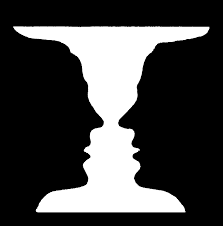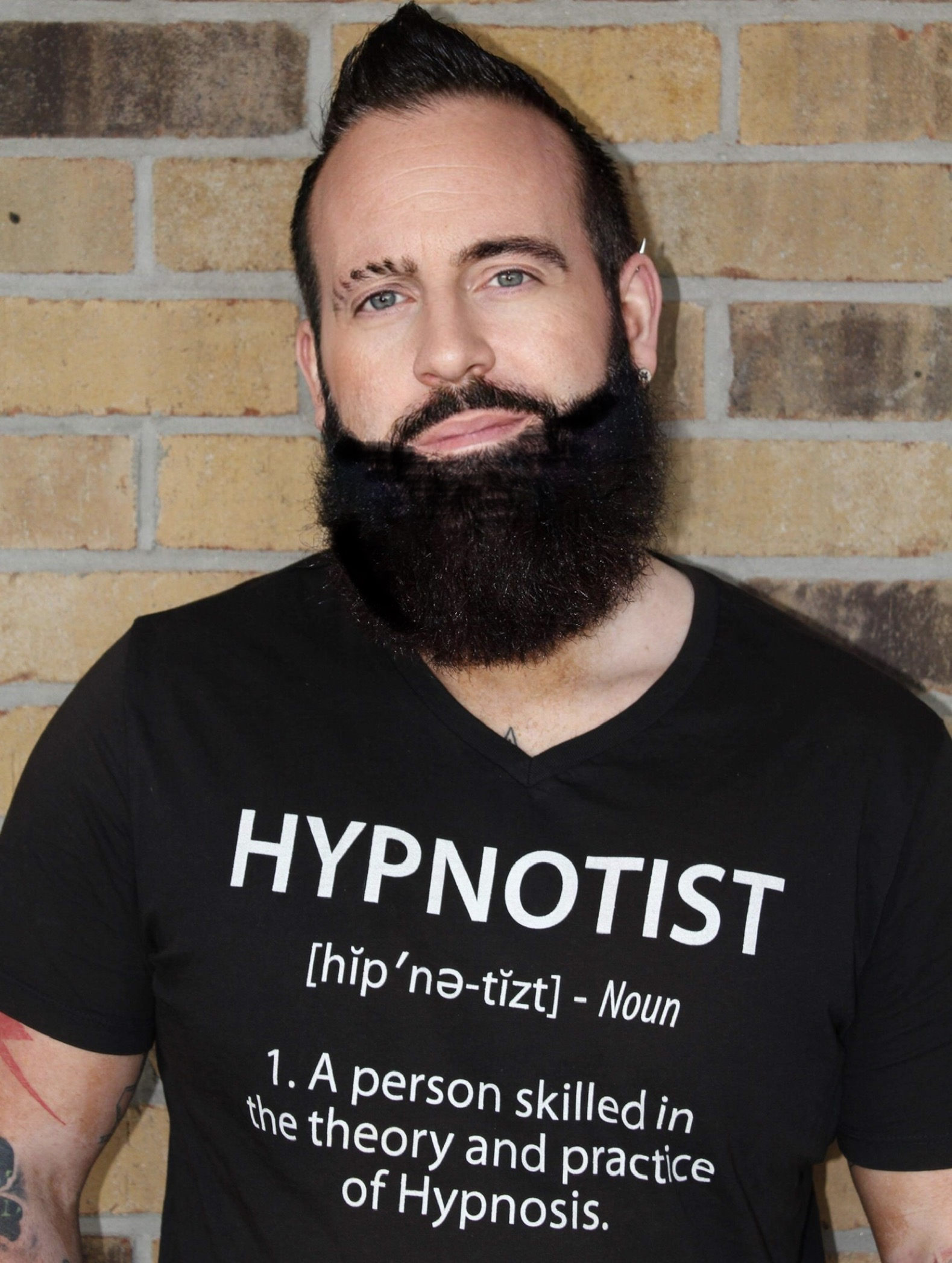
Now, a big shout out that most of this work is from a very great hypnotist called Jørgen Rasmussen. I believe he hails from Norway. He's got a couple of great books out there, "Provocative Suggestions" and "Provocative Hypnosis" that I'd very much recommend you go and listen to. It's certainly been an inspiration to me in the work that I do. And if you can catch him doing a rare course, you should go and do the course and learn his model of doing hypnosis. So a lot of this is borrowed, is inspired, is a homage to Jørgen out there, with some of my own looks and some of my own twists and takes and some of the things he does and expanding a model in my own way.
Also, inspired by the work of Sydney Banks and the Three Principles work. And the concept is much this, is how you see the world is not the real world. And if there is a real world, and that is a big if, it's not the way that any of us see it. So the lens at which we look through the world, lens in which we look at our own lives and our own problems is not an actual direct correlation of actually what happened or what's going on. So I'm going to share various stories with you inspired by the aforementioned gentleman's work a little bit earlier on here today, and some of my own stories to help challenge your mind to see that the map is not always the territory.
So I invite you now to just perhaps think of a challenge that you have in your own life. Allow that to come up, whatever it may be, just allow it to come up. For example, if you were to come and work with me, what would be the issue that you'd like me to help you work on? Allow that to come up, give yourself a moment or two. Pause the podcast if you need to.
Okay, welcome back. I'm gonna tell you some stories and I'd like you just to listen to these stories in a way that you'd listen to good music. Just kind of bathe in it for a while. Some of it is gonna make sense and some of it won't immediately. Did you know that everything you think you see outside, you actually see in consciousness is actually happening inside of you? It's kind of like a Star Trek matrix-type thing.
So if you imagine there's a picture in front of you right now, go and have a look and see if there's a picture in front of you. Just take a look at that picture, and take a look at that picture. And if I were to ask you, "What do you see in that picture?" What could you say? Perhaps there's colors, red, blue, green. So kind of just describe in your mind or out loud, what do you see in that picture that's around you in your home or wherever you are right now?
Now, what if I told you if none of those colors are actually there? What if I told you that? So there are some rays of light hitting our retina, the part of the eye, with information. Then in some weird and wacky and wonderful way, our minds kind of make sense at what's there and it turns it into a neurological activity. And the mind basically answers question and gathers information from what's coming in approximately has to be there. And then the mind will generate an image in consciousness of what it thinks is going on or it thinks is actually out there. But that's just a thought construct, it's not the same as what's actually out there. It's what your mind in the moment thinks has got to be there based on the sensory data that's coming in.
Now, it's a bit like the American media, meaning that there's a lot of undercover work that's going on, a lot of covert stuff. So if you've subscribed to a newspaper or Fox News or CNN or whatever and you get the front page of the newspaper or you watch or you listen to these news programs, you kind of watch them or you open up a newspaper, but you have really no idea how that got there. How that news got there. How that front page got made. How that headline got there. How it came into being. You don't know how the editor was given instructions and how people have interrupted it and how the staff came about. All the stuff is completely invisible to you. So you just see the image. You just look at that image, your mind behind the scenes, if you will. Some of that information that hits your retina, your mind thinks, "Well, that's what's got to be going out there behind the scenes." Your mind is doing a lot of stuff and one of them is actually adding color to that picture.
So according to the people who work with the visual system, the colors aren't actually there in the external world, at least not in the way that we perceive them, but the way our nervous system works, our minds think that there has to be a certain color out there, so it projects it. And in that way, it seems as if the color is out there on the wall. And really, it's really an interesting thing.
So we're meaning-makers, we're projecting meaning all of the time. And one of the things that were projecting, for example, is that picture on the wall in front of you. It seems as if the picture is just there. It's just out there. It seems as if it's there and it just seems as if your eyes are kind of just, like, recording the picture and that your mind is storing it. It seems that way. It seems that's the reality. It feels that way, but it's not actually the case. But since most of us don't realize that it's just our thinking, since we don't know how our minds and brains make stuff up and makeup meaning, we don't know that we're thinking. It seems as if what we're thinking is just exactly the same as what's on the wall.
So you can't actually experience situations directly or human beings directly, you can only experience what the mind thinks is going on in the moment. In NLP terms it's called generalized, store or delete. Always generalize information that comes in. It's usually very useful, meaning every time you see red it probably means stop or danger. You don't have to think about it. So it can be useful but it does not...you're not seeing things for what they are. We distort certain things because if you were to focus on everything that was going on around you all of the time, your brain would explode like that guy from Scanners. It does not help.
And we distort certain things. And we do this all the time. You've heard stories of an accident happens, there's 10 people that see a car hit another car, the police come, they interview all 10 people and there's 10 different stories of 10 different colored cars of 10 different colored people of different genders. Everyone has got a different story. We distort information. And sometimes this is useful and sometimes it's not. It's a way of our brains processing the world, but it also prevents us from getting the direct information that actually happened because it's going through our filters and through our experiences. In NLP terms, the map is not the territory. So you can't actually experience situations directly or human beings directly, it's only what our minds experience as our mind thinks is going on at that moment.
So I'd like for you to go ahead and think of two people in your life, somebody that you like very much and someone you dislike, and go ahead and describe in your mind or out loud the positive qualities of the person you like. And after you've done that, think out loud or inside your head of the qualities of the person, you dislike and why you like them. And what if I told you that most of what you're feeling is just an illusion? The idea that you really, really like or that you really, really dislike this person is just simply an illusion. A mind game you're playing with yourself.
Now the person you really, really dislike, the presuppositions is that the feelings that you feel when you think about this person really informs you about that person. If it's a person you like, the presuppositions is, "I love her," if it's a person you dislike, "I hate him." So it presupposes that my feelings directly tell me about the other person and I feel this way because the other person is like that, right? It feels this way because you see the person you feel good, you see the other person you feel bad. So it seems as if your feelings directly come from the person or tell you about this person, or I feel like this around this person because they're like that, and I feel like this around this person because they're like that. And it kind of feels right, doesn't it?
But if I met this person and this is happening behind the surface, my mind is going to go...without me knowing, is gonna kind of make up a story about this person. It's a bit like a paintbrush artist. So my mind will project, same way with a color, my mind will project qualities, characteristics onto this person, a story of who that person may or may not be in relation to me. This happens unconsciously and it happened very, very quickly. And when my mind does that, I get a feeling, but what am I feeling in my mind is actually what I think about the person in that moment. I'm feeling the story of that person I like or dislike, but it's just a story, it isn't the same as who they actually are, at least, not exclusively.
Stay Tuned For Part 2 Next Week...
Always Believe,
Luke Michael Howard CHT
Toronto and Ottawa Clinical Hypnotist



